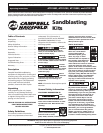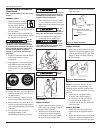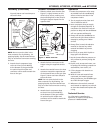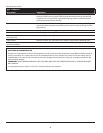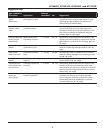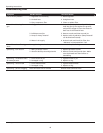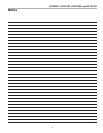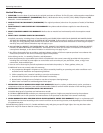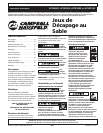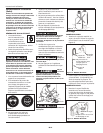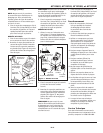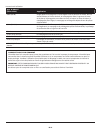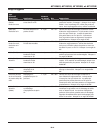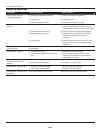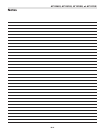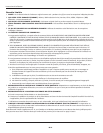
5
AT122601, AT125102, AT121002, and AT121102
www.chpower.com
Suggested Uses
Type of Abrasive
(Sieve/Size) Application
Distance
from Work PSI
Suggestions
Sand
(30-50)
Glass beads
Etching and
drilling holes in glass
1 - 4 inches 40 - 90 Move gun back and forth over the template in
a brushing manner. Blast at a 90° angle. For fine
polishing, use glass beads for the abrasive. For
drilling holes, use 30 sieve sand.
Sand (40)
Ground walnut
shells
Antiquing or
weathering wood
2 - 6 inches 40 - 90 Use brushing strokes and watch the abrasion
rate carefully. Soft wood will wear faster than
hardwood. Smaller grit sizes gives smoother finish.
Start with low pressure and gradually build up
pressure. Blast at a 45° angle.
Sand (50-100) Glass
beads, ground
walnut shells
Wood sanding and
refinishing furniture
1 - 6 inches 40 - 70 Use brushing strokes and watch the abrasion rate
carefully. Use walnut shells for coarse finishing and
glass beads or fine sand for fine finishing. Blast at a
45° angle.
Sand
(20-40)
Cleaning barbeque
grills and iron pots
1 - 4 inches 50 - 125 Be sure to mask any glass or painted surface that
could be accidentally damaged. Blast at a 80 - 90°
angle.
Sand (20-40)
Aluminum oxide
Cleaning automotive
parts
1 - 4 inches 40 - 80 Use larger grit sand on a hidden area. If the base
material is being damaged, use a smaller grit. Blast
at a 80 - 90° angle.
Sand
(20-40)
Cleaning and stripping
masonry
1 - 4 inches 50 - 125 Use a heavy grit sand with a sweeping overlapping
stroke. Blast at a 80 - 90° angle.
Ground pecan or
walnut shells and
corn cob meal
Cleaning or preparing
for paint
1 - 6 inches 40 - 125 Use brushing strokes and watch the abrasion rate
carefully. Soft wood will wear faster than hard
wood. Smaller grit sizes five a smoother finish. Start
with low pressure and gradually build up pressure.
Blast at a 45 - 60° angle.
Sand (20-50)
Aluminum
oxide (50-80)
Cleaning or stripping
outdoor equipment
1 - 3 inches 50 - 125 Remove flaking paint first with wire brush, then
sandblast with a heavy grit abrasive. Multiple
layer of old paint should be scraped first. Prime
immediately following sandblasting to prevent
corrosion. Blast at a 45 - 60° angle.



